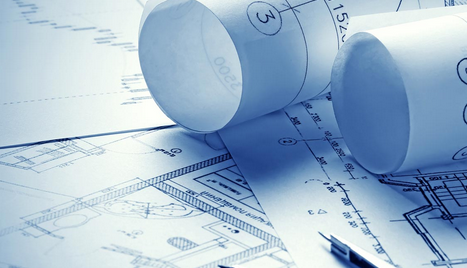|
Graduating in 2009 with a Bachelor in Architecture was not one of the best things that can happen to an ambitious fresh graduate. I found myself in Seattle with a degree in architecture design (do not mistake it with computer architecture) but no jobs in the market. The only obvious path for me was to find a job as a designer. I joined Attendible as a designer and started my journey in UX. Architecture and UX might seem like two different fields but it’s amazing the similarities they share. Here are 5 things I learned in architecture that helped me in my career as a UX designer:
1- Prototypes = concept drawings Sketching spaces for users is very similar to sketching prototypes for apps. You have to put yourself in the shoes of the user who is navigating the space or the app. You have to think of every scenario and you have to create a design that is usable and intuitive. Both are part of the early stage of design and both are used to communicate ideas to users to receive constructive feedback and move forward in the design process. 2- Form follows function There are two schools of design but I am a big believer that form should follow function. For design to be usable, aesthetics are secondary to the way the product or space is used. You can’t come up with a cool design without taking into consideration how the user will react to it. In this sense you start your design with thinking about why and how this space or product will be used. You put a strategy for the project, this is usually a phase that involves both the product’s needs and the user’s needs. Function precedes visual design. This is one of the core principles of User experience and we can see it in Jesse James Garret Elements of User Experience. This does not mean that the relation is a one way street. Dependencies run in both directions, sometimes decisions made on the surface level might be important enough to alter the form or the structure of the design. 3- It all comes down to the user “The Biggest reason user experience should matter to you is that it matters to your users.” Jesse James Garrett As designers we are tempted to design and produce what we think is “the design”. This is not the case for architects or UX designers. Usually an architect is commissioned by a client to design a house or a space. Constant feedback is taken from that client in all aspects of the design. The client usually has an important role in the design phase. At the end of the day, he is the one who will be using the space. This is also the case when designing for web and mobile products. UX has the user in its core. Users are involved early on through the exercise of creating personas to user research and usability studies. Every conscious decision the designer makes has to take the user into account. 4- Collaboration is a core element in the design process Both architects and UX designers have to collaborate with different people to bring their design to life. In the case of architects, they have to collaborate with civil, electrical, and mechanical engineers to see if their design is structurally feasible. UX designers on the other hand have to collaborate with developers to see if their design is technically feasible; and with product mangers to see if their design aligns with the company’s vision and business plan. 5- Design is a never ending process I think both architects and UX designers understand that their is no such thing as a “complete design”. Although we construct buildings and ship products, nothing is ever complete. Their is always a learning curve from each project and every design has to adapt to the new trends and needs of it’s time. There is constant updates and modifications that undergo each. We are living in a fast paced world and it’s only natural for our designs to evolve with the ever changing environment around it.
8 Comments
|

